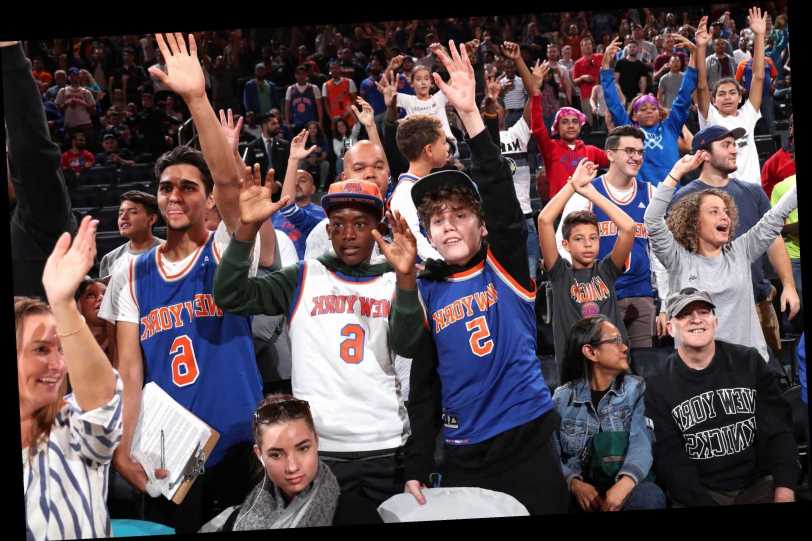More from:
Mike Vaccaro
Bitter Knicks ending has a Derrick Rose silver lining
How I'll remember Marty Schottenheimer: 'What am I doing wrong?'
Buccaneers' win-now Tom Brady move pays off big time
Knicks can't let Derrick Rose trade stunt Immanuel Quickley's growth
Chiefs, Buccaneers went through dark times not long ago
There were a few hundred folks scattered throughout Madison Square Garden that Thursday afternoon, family and friends sitting among the staffers and the media folks. There was a surreal tint to the day even as St. John’s and Creighton made their way through the layup lines last March 12.
One by one, across the country, conference basketball tournaments had conceded to the inevitable: the Big Ten in Indianapolis; the ACC in Greensboro, N.C.; the SEC in Nashville, Tenn.; even the Atlantic 10, across the river in Brooklyn, all of them had called off their tournaments because of COVID-19. It seemed a matter of seconds before the Big East followed suit.
Instead, just past noon, the Red Storm and the Bluejays tipped off. In almost every year going back to 1983 — when the Big East came home for good to Manhattan — this would have been an unofficial civic holiday, especially with the Johnnies playing, especially after they walked off the floor at halftime leading the top seeds, 38-35.
They never walked back on.
At halftime, the Big East realized what it needed to do. It called off the game, and the balance of the tournament. All across that day, one by one, sports in America boarded up its windows, padlocked its doors and settled in for a long season of dormancy. In New York, the games ultimately returned, starting with the Belmont Stakes in June and baseball a month later.
The fans did not. They were not allowed. Across the country, some states relented during the latter stages of baseball season, during college football season. In Western New York, Gov. Cuomo took mercy on the rabid acolytes of the local football team who refer to themselves as the Bills Mafia, allowed 7,500 people to Bills Stadium in suburban Buffalo for a pair of NFL playoff games.
Around here, we waited.
Feb. 23, the wait ends.
Feb. 23, it will be 348 days since the last fans were allowed into a New York-area venue, those hundreds of Johnnies fans who left the Garden convinced St. John’s would’ve finished what it started against Creighton, maybe done something magical with the rest of Big East Weekend. Cuomo announced Wednesday that local arenas and stadiums with capacities of more than 10,000 can start welcoming fans back, making 10 percent of seats available.
That means that on Feb. 23, the Knicks-Warriors game at the Garden and the Nets-Kings game at Barclays Center will be the first morsels of normalcy our sporting landscape will enjoy in 49 ½ weeks. Nets-Kings, in normal times, might barely register on the local consciousness. Knicks-Warriors would get some attention, mostly because you never know if Steph Curry is going to go off for 60.
Now, it will be an opportunity for 1,981 Knicks fans and 1,773 Nets fans to watch a live sporting event for the first time in what feels like two days longer than forever. The Islanders will open the doors for around 1,400 fans when they welcome the Bruins to Nassau Coliseum on Feb. 25, and the next night the Rangers will greet 1,800 or so when the Bruins visit the Garden.
“Most of the fun of playing in New York is the opportunity to play in front of New York fans, the passion they have, the energy they bring night after night,” Knicks forward Julius Randle said a couple of weeks ago. “I miss that, I won’t lie. I can’t wait until they’re back so they can be a part of that.”
Absence can make the heart grow fonder, of course, and so every athlete who has voiced a similar (and no doubt genuine) antipathy for empty arenas has likely forgotten the boos that also accompany paying fans in the building. It’s funny though: One of the most reassuring moments after sports returned following the events of Sept. 11, 2001, was the afternoon 12 days later when Armando Benitez blew a save for the Mets against the Braves and was booed off the mound at Shea Stadium.
Things sure felt plenty normal then.
It will still be odd, having 90 percent of the seats unoccupied. Even New York fans with their muscular voice boxes will have a hard time replicating a full house at 10 cents on the dollar. But they will surely try. There will be hassles to go along with attending these games, sacrifices, some more intrusive and invasive than when Sept. 11 introduced us to the daily sporting realities of metal detectors and bag checks. Some will be slow to return.
But the fact is, they can return. For the first time in 348 days, going to a ballgame isn’t something you wistfully talk about in the past tense, like having a meal at the Automat. We’re not all the way back yet. But we’re getting there.
Share this article:
Source: Read Full Article

